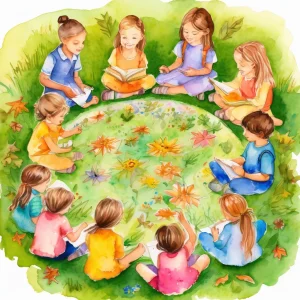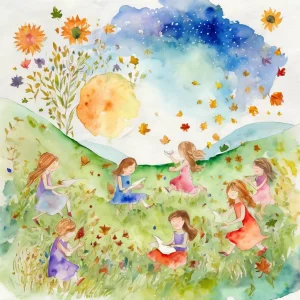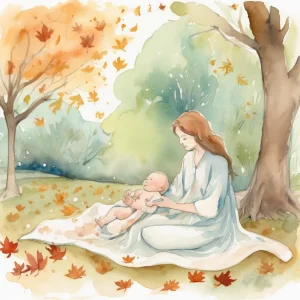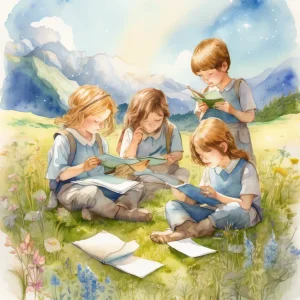Activity
Similar Activities
Enchanted Nature Collage Walk Adventure
Children’s Age: 1.5–2 years
Activity Duration: 5 – 10 minutes
Explore nature and boost creativity with the "Nature Collage Walk" activity designed for children. This engaging activity encourages communication, language development, and a love…
Activity Duration: 5 – 10 minutes
Whispers of the Seasons: Seasonal Collage Exploration
Children’s Age: 5–6 years
Activity Duration: 10 minutes
Engaging activity where children create collages representing different seasons.
Activity Duration: 10 minutes
Cultural Creatures: Stop-Motion Animation Adventure
Children’s Age: 4–9 years
Activity Duration: 10 – 25 minutes
An interactive activity using technology to create stop-motion animations exploring plants and animals from diverse cultures.
Activity Duration: 10 – 25 minutes
Shadow Hunt and Solar Exploration
Children’s Age: 5–6 years
Activity Duration: 10 – 30 minutes
An activity combining Physics, Space, and Ecological Awareness for children aged 5-6 to explore shadows and solar energy.
Activity Duration: 10 – 30 minutes
Enchanted Tales: Family and Friends Story Theater
Children’s Age: 2–7 years
Activity Duration: 10 – 25 minutes
An interactive storytelling activity promoting language, academic, and social development.
Activity Duration: 10 – 25 minutes
Cosmic Conundrum Chefs: Space Word Problem Adventure
Children’s Age: 7–8 years
Activity Duration: 10 – 20 minutes
Let's play Space Word Problem Chefs! We'll use paper, pencils, and space-themed stickers to explore language and problem-solving. Set up a cozy spot, grab your supplies, and get re…
Activity Duration: 10 – 20 minutes
Nature Scavenger Hunt to Boost Language Skills
Children’s Age: 0 month – 18 years
Activity Duration: 10 minutes
Let's go on a Nature Scavenger Hunt to find cool things outside! Grab a bag, a list of items like acorns and leaves, and maybe a magnifying glass. Find a safe spot, make the list, …
Activity Duration: 10 minutes
Enchanted Coding Adventure Storytelling with Imagination
Children’s Age: 10–12 years
Activity Duration: 45 minutes
The "Coding Adventure Storytelling" activity is tailored for children aged 10-12 to enhance empathy, play skills, language abilities, and introduce basic programming concepts in a …
Activity Duration: 45 minutes
Adventure Through the Obstacle Course Wonderland
Children’s Age: 2–3 years
Activity Duration: 15 minutes
"Obstacle Course Adventure" is an engaging outdoor activity tailored for children aged 24 to 36 months, focusing on language and motor skill development in a fun environment. By se…
Activity Duration: 15 minutes
Nature Sounds Sensory Experience for Infants
Children’s Age: 0 – 3 months
Activity Duration: 10 minutes
Engage infants aged 0 to 3 months in a Nature Sounds Sensory Experience to support language development by listening to and exploring nature sounds. You will need a soft blanket or…
Activity Duration: 10 minutes
Enchanted Nature Scavenger Hunt and Discovery
Children’s Age: 6–10 years
Activity Duration: 30 minutes
The "Nature Scavenger Hunt and Data Collection" activity is designed for children aged 6 to 10 to enjoy a fun and educational outdoor experience. By exploring nature and collecting…
Activity Duration: 30 minutes
Holiday Sensory Bottle Activity: Sparkling Winter Wonderland
Children’s Age: 3 – 6 months
Activity Duration: 5 minutes
Engage babies aged 3 to 6 months in a holiday sensory bottle activity designed to stimulate their senses and support language development. Gather simple materials like a plastic bo…
Activity Duration: 5 minutes


























